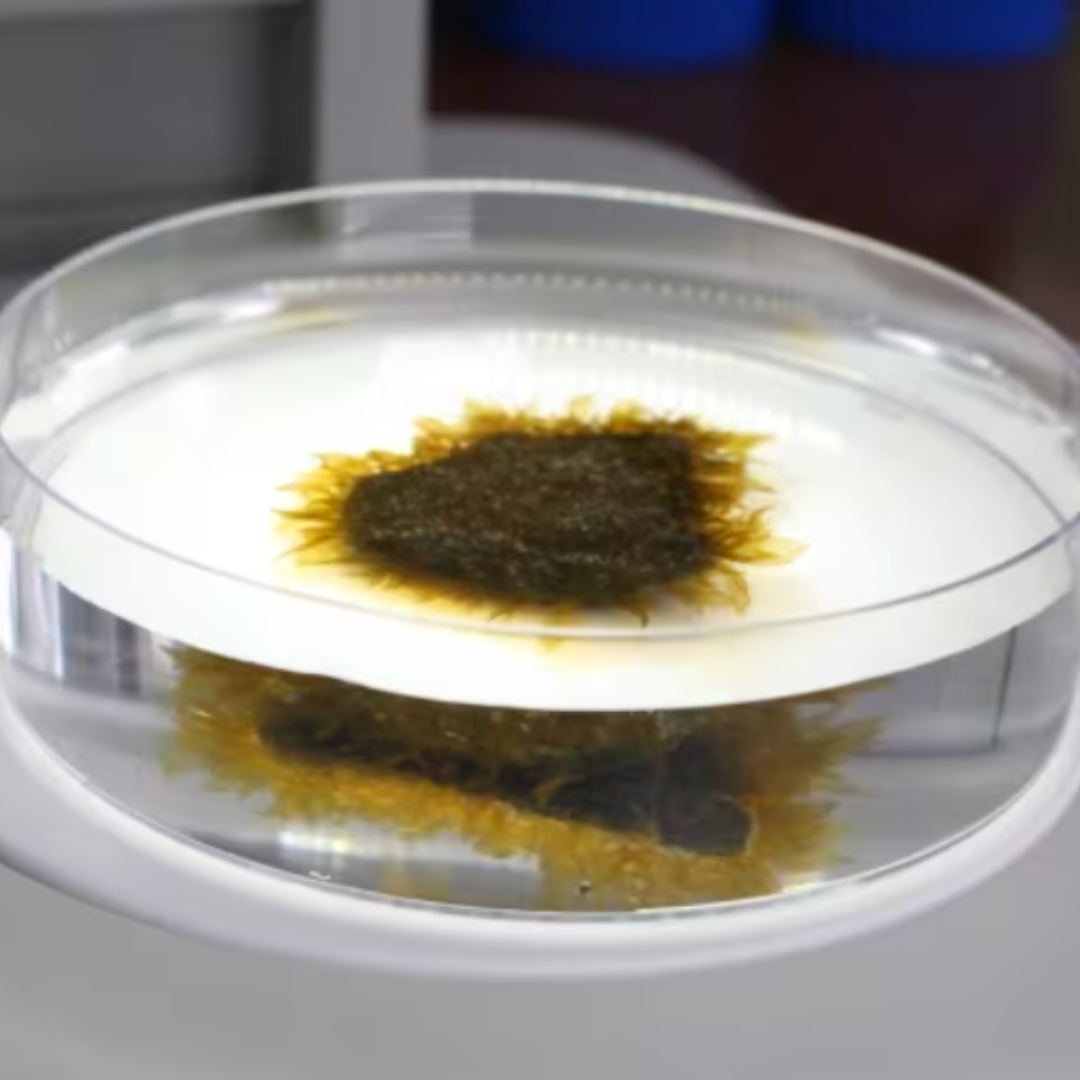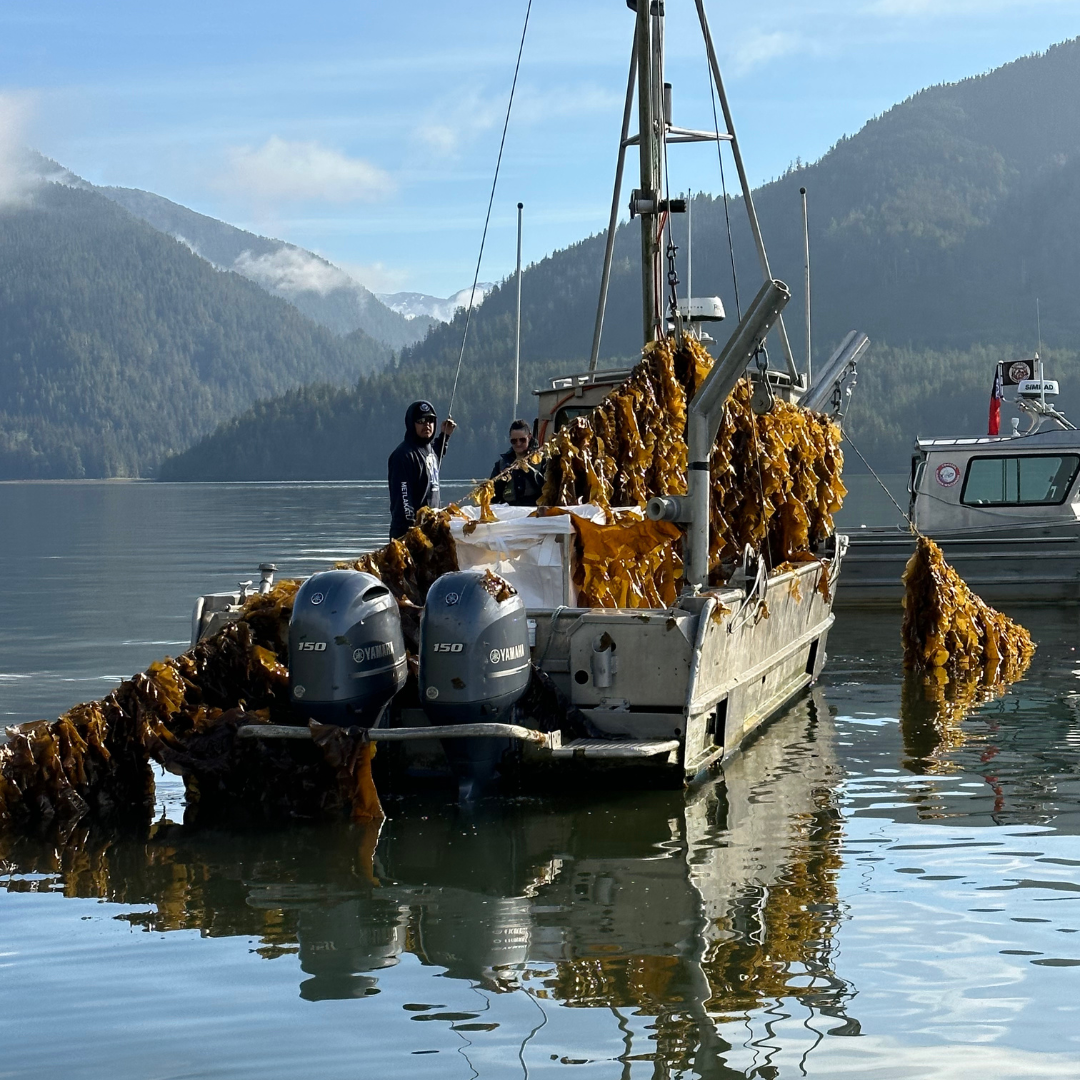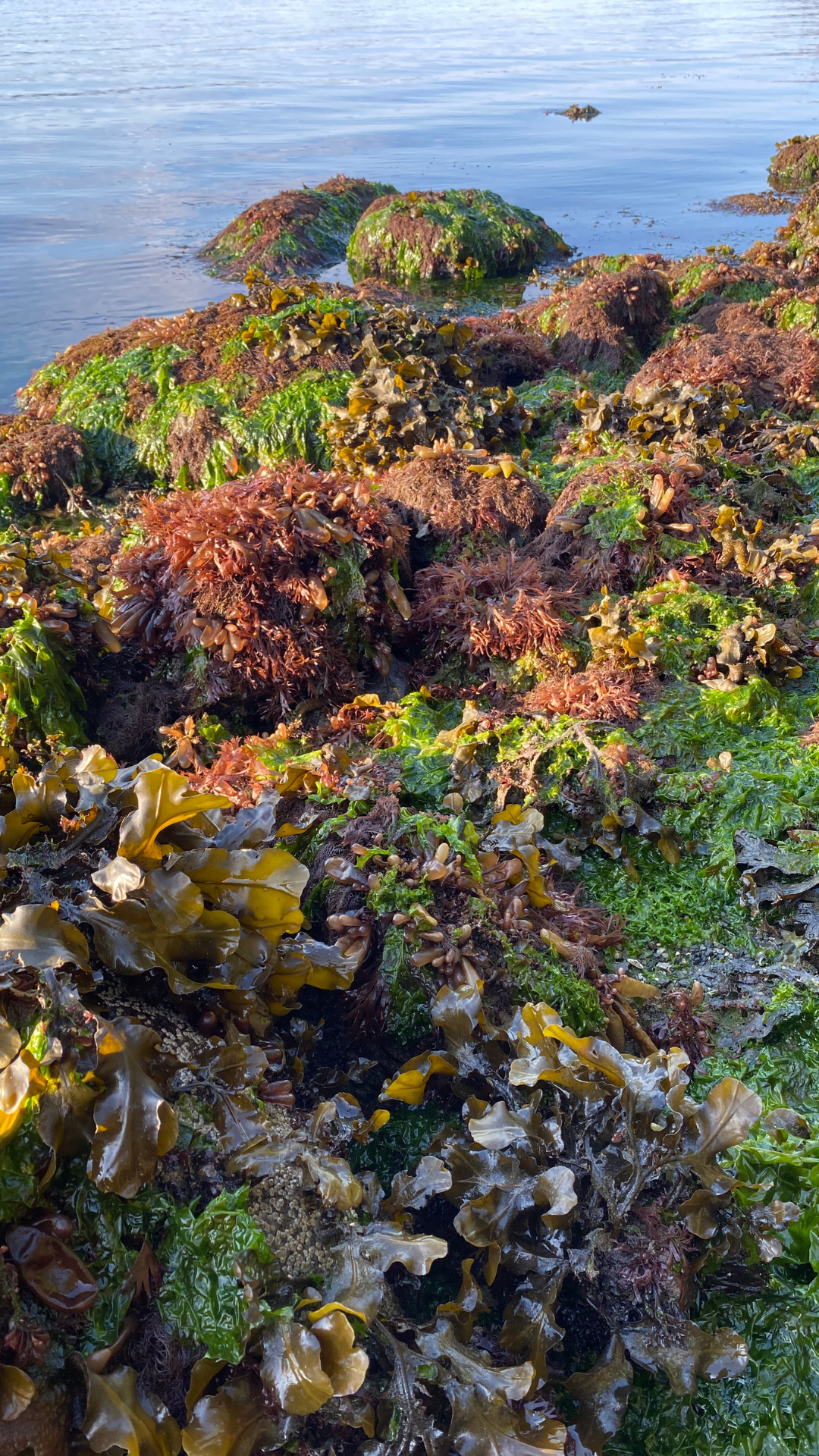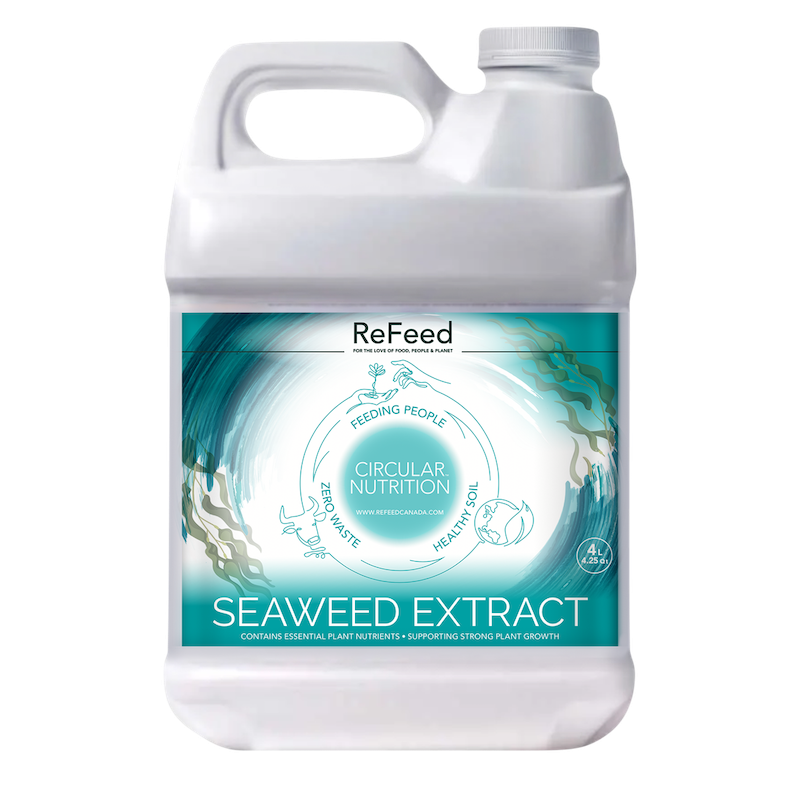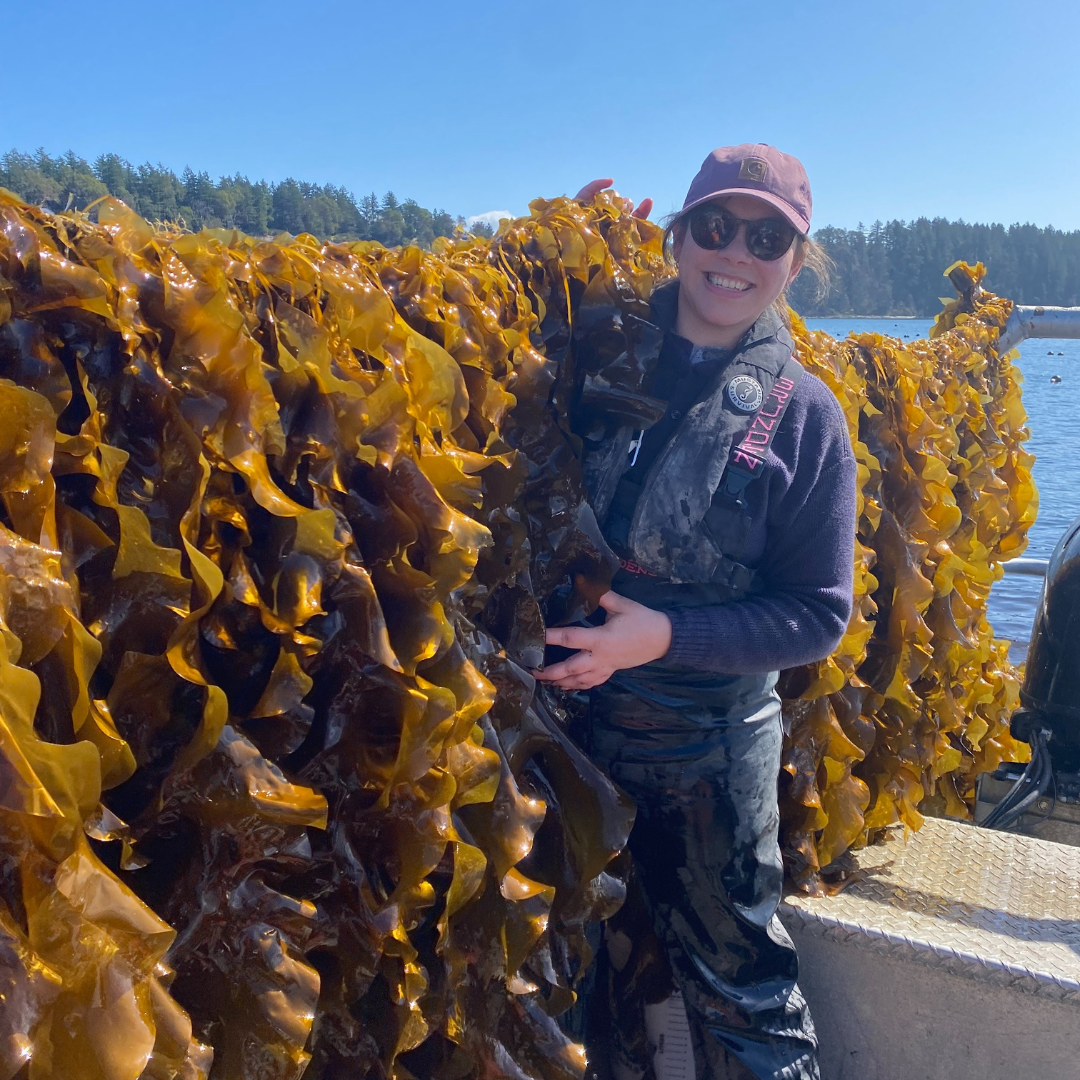At Cascadia Seaweed, we cultivate local species of seaweed and manufacture products for crop and cattle farmers.
UN Global Compact’s seaweed manifesto touts the plant’s potential as food, energy source
CBC Radio · Posted: Dec 04, 2020 5:57 PM ET | Last Updated: December 4
https://www.cbc.ca/radio/whatonearth/why-seaweed-might-be-the-next-key-asset-in-the-fight-against-climate-change-1.5829026
Some researchers and advocates are looking under the sea for the next answer to everything from climate change action to food sustainability around the world.
"Seaweed can be the source of so many different and very positive things, both for our health and for the planet," Vincent Doumeizel, a senior advisor at the United Nations Global Compact, told What on Earth host
Laura Lynch.
He touted the potential of seaweed as a food source that can cut down our meat consumption, provide feed for animals, and even possibly become a source of bioplastics.
Doumeizel is co-author of a manifesto for seaweed presented to the UN earlier this year as part of its corporate sustainability initiative, titled Seaweed Revolution: A Manifesto for a Sustainable Future.
It calls for a worldwide effort to harness the potential of seaweed, kelp and other related underwater-dwelling plant life as a source of renewable food and energy "for a growing world population." It also calls for efforts to protect the world's seaweed, which "is rapidly deteriorating, caused by climate change, pollution and over-exploitation of its resources."
Anna Metaxas, a professor at Dalhousie University's department of oceanography, says that seaweed and kelp beds have a natural advantage in the fight against the world's rising carbon emissions.
"Kelp beds are like trees…. They capture carbon dioxide, because they're plants, and they photosynthesize," she said.
Unlike trees that house CO2 in their roots, kelp beds usually break down and are consumed by deep-sea creatures, or become buried in sediment when they die.
"So kelp captures carbon dioxide, and then they actually help bury it in a place from where it's very difficult for it to come back into the atmosphere," explained Metaxas, who studies both shallow and deep-sea ecosystems.
This doesn't make it a silver bullet to fight climate change, however. For one, scientists like Metaxas agree that the most important way to do so is for countries to reduce their carbon emissions.
What's more, kelp cultivated for food by humans will end up releasing its CO2 into the atmosphere anyway.
And, Doumeizel says, we'll have to grow quite a lot of seaweed to make a sizable dent into the world's carbon emissions totals.
"We have to become farmers of the ocean. We have to integrate this entire ecosystem in our model, in our global systems. That's why I'm so enthusiastic, because I think we are just starting to understand what's going on there," he said.
What's more, kelp cultivated for food by humans will end up releasing its CO2 into the atmosphere anyway.
And, Doumeizel says, we'll have to grow quite a lot of seaweed to make a sizable dent into the world's carbon emissions totals.
"We have to become farmers of the ocean. We have to integrate this entire ecosystem in our model, in our global systems. That's why I'm so enthusiastic, because I think we are just starting to understand what's going on there," he said.
Reid explained that his First Nation relied on the kelp as a major food source, but it also served as a habitat and food source for several seaborne creatures in the area.
In Nova Scotia, Metaxas has also seen "a slow death of the kelp beds" over the last 10 to 15 years.
Warming waters slow kelp's growth rate, particularly in the winter months, she explained. It's also become fertile ground for lacy crust bryozoan, tiny aquatic invertebrates that grow in large colonies that can overtake kelp, weighing them down and making them brittle.
As storms become stronger and more frequent, the changing climate becomes a greater threat to kelp beds that have been weakened this way by the bryozoans — an invasive species also known as a "coffin box" that hitched a ride from human boats' ballast water.
Metaxas's research group is hoping to learn why some kelp beds around Nova Scotia are currently doing better than others. Part of the reason, she said, could be that those areas have stronger water currents, keeping the temperature of the water down while also ensuring any kelp that grows in that area will be more resilient.
"They are luxuriant, thick, beautiful kelp beds with large kelp, thick blades, very, very healthy," she said of one area east of Halifax, for example.
Meal ideas? Ask the 'kelp godfather'.
The growing interest in seaweed and kelp comes as no surprise to Louis Druehl, a professor emeritus of marine biology who has worked at both the Bamfield Marine Sciences Centre and Simon Fraser University.
The 84-year-old has been farming kelp since 1982, and has been dubbed the "seaweed guru" or "kelp godfather." Currently he owns a kelp food products company out of Bamfield, B.C., with his wife Rae Hopkins.
"Not just kelp, but farming the sea makes a lot of sense, simply because we're running out of arable land, and we're not running out of people. And so the demand is going to increase, so the sea is a logical place to turn to," he said.
Druehl says he starts every morning with a toasted sheet of dried kelp with his breakfast.
"It's like a potato chip with good salt on it," he said.
Doumeizel has had less luck acclimating his household to a seaweed-heavy diet. "To be honest with you, the problem is that I think my kids are absolutely disgusted with seaweed because I speak about seaweed all day long," he lamented.
---------------------------------------------------------------------------------------------------
Written by Jonathan Ore. Produced by Laura Lynch, Molly Segal and Rachel Sanders.

C - 9774 Third Street Sidney British Columbia V8L 3A4
Email: info@cascadiaseaweed.com
Phone: 1-778-351-4484

9774 - C Third Street Sidney British Columbia V8L 3A4
Email: info@cascadiaseaweed.com
Phone: 1-778-351-4484

